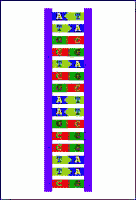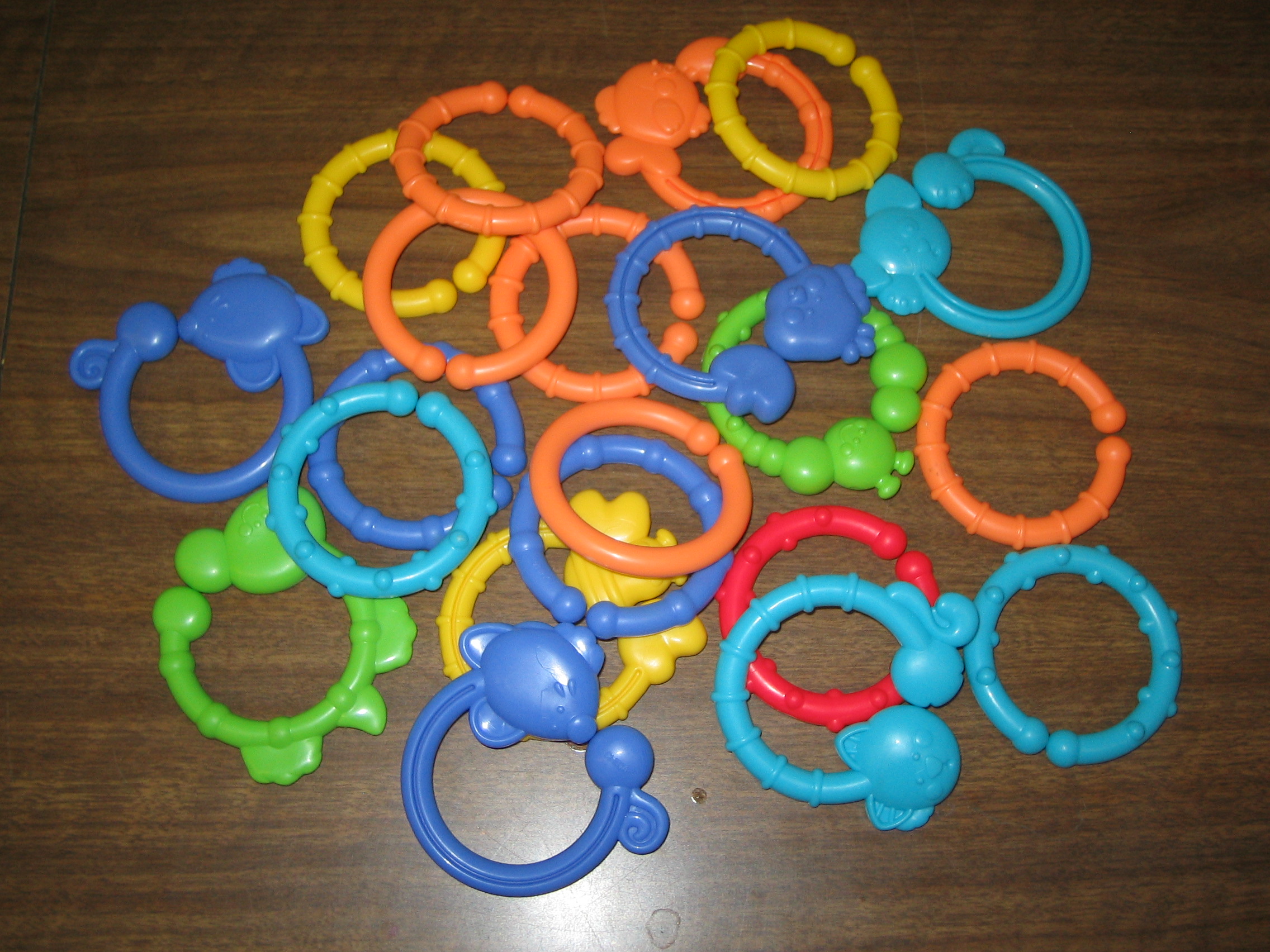This activity was created by
Any questions, comments, or corrections can be directed to us at
Use of our material:
This activity was created by
Any questions, comments, or
corrections can be directed to us at
![]()
 |
BE
A DNA MOLECULE role play Replication Transcription Translation |
See
additional role plays by Audra Brown Ward (Directions and activity cards for acting out Electron transport chain, Light reactions, RNA processing, Translation, and double fertilization) |
AHEAD OF TIME:
Copy the
nucleotide/codon cards on cardstock.
Use different colors for the A, T, C, G, and U cards. Codon/anticodon cards are
all same color and can be on tan, grey, white, etc. If you want to you can
laminate the cards.
REPLICATION:
If you have a large class:
Give each student a card with an A, T, G, or C on it.
Have have them line up (with A's matching T's and G's matching C's) in a double
line. You can have them show directionality by having one strand face one
direction and the other strand face the opposite direction with their left had
on the shoulder of the person in front of them and their right hand holding out
their nucleotide card.
If you have a
small class:
Place 1/2 of the cards in a line on the counter or on lined up desks, and have
students be the matching strand.
Teacher can give directions at first and then have students repeat steps without
direction.
Begin by separating the two strands. Students on one side back away and form a
replication fork.Talk about how each of the strands can be a template now for the incoming
nucleotides.
Choose one strand to be the template and the remaining students become the
nucleotide pool in the cytoplasm. As replication proceeds you can talk about
enzymes involved, where this is happening, etc.
You can give cards to students and they have to figure out when/where they need to add in or have a pool of cards and pick individual students one at a time and have them choose the correct card from the pool to use. Have students fill in along the template one at a time by bringing in their card, holding it out, and matching it, with the appropriate partner.
One student or the teacher can act as the DNA polymerase and move along the strand to be copied, bringing in students with the correct match and lining up the matching nucleotide to build the DNA. As the chain grows, incoming students match their card to the strand and attach to the next person in line by placing their hand on shoulder of the student in front of them. You can trade places and do it again so students get to be both the template and free nucleotides.
TRANSCRIPTION.
Give each student a card with an A,
G, C or T, on it.
Have them line up facing in the same direction with their card held out to
the side with their right hand. Others will be the ribonucleotide (A, C, G,
or U) subunits in the cytoplasm.
As you set up you can talk about enzymes involved, where this is happening, etc.
You can give cards
to students and they have to figure out when/where they need to add in or have a
pool of cards and pick individual students one at a time and have them choose
the correct card from the pool to use. Have students fill in along the template
one at a time by bringing in their card, holding it out, and matching it, with
the appropriate partner.
One student or the teacher can act as the RNA polymerase and move along the strand to be copied, bringing in students with the correct match and lining up the matching nucleotide to build the DNA (or RNA). As the chain grows, incoming students match their card to the strand and attach to the next person in line by placing their hand on shoulder of the student in front of them. You can trade places and do it again so students get to be both the template and free nucleotides.
BE
A RIBOSOME (translation role play)
AHEAD OF TIME:
Purchase a set (or 2) of baby toy linkers. The kind that are "C" shaped and
come in different colors and can be joined to make a chain (See picture below).


Copy the codon cards onto cardstock. Cards with the same symbol in the bottom right hand corner are matching codon/anticodon partners. (This also helps in sorting/resetting cards between class periods and allows you to make sure there are matches for everyone as you hand out cards.)
Have half the class represent the mRNA message to be read by standing in a line facing in the same direction with their left hand on the shoulder of the person in front of them and their right hand holding out their codon card so the codon can be read by the incoming person.
The rest of the students represent the pool of charged up t-RNA subunits in the cytoplasm. These students will hold their card representing the anticodon in one hand (so they can read it) and a baby linker representing the amino acid in the other.
Have a student or teacher act as the ribosome moving along the line, reading the message, and helping the appropriate t-RNA's match their card, line up in the correct place, hook their baby linker to the linker in front of them, and take the growing protein (linker chain). The "protein chain" grows it is passed down the line. After linking, t-RNA students exit the site with their card, return to the cytoplasm, pick up another amino acid, come back to the ribosome, and make another protein. (m-RNA is reusable!) When you get to the stop codon and no one has the match, teacher can fill in the STOP card and talk about ending messages.
If you use the counter to lay out a really long message then all students can be "t-RNA's"
You can even have students use a codon table to tell which amino acid their "linker" represents.
For
AP BIO
Copy off the APE cards
Have students hold the cards next to the mRNA message line to represent the A, P
, E sites on the ribosome. They can move along the line as the tRNA's come in.
Bioteacher help Biology other units APBIOteacher help Riedell Science Home APBIO other units Zoology other units
 Image from: http://www.tokyo-med.ac.jp/genet/mutation/nn.gif
Image from: http://www.tokyo-med.ac.jp/genet/mutation/nn.gif

 Images by Riedell
Images by Riedell